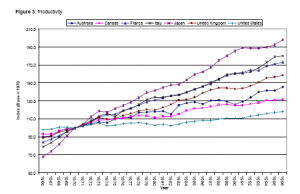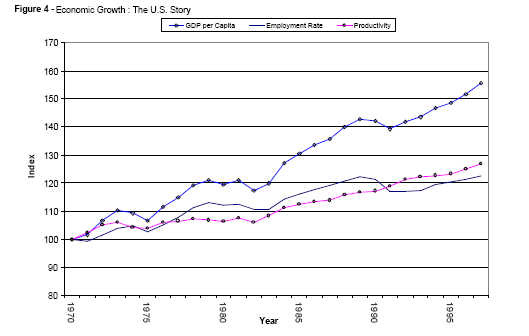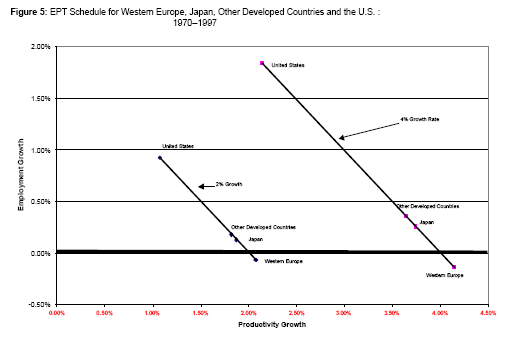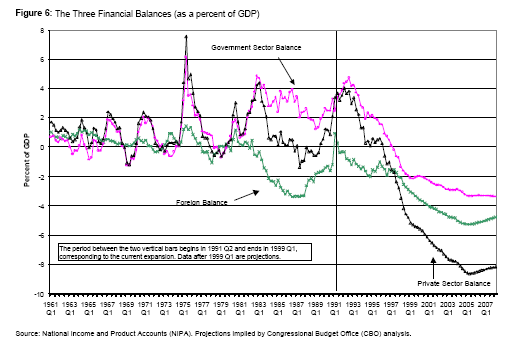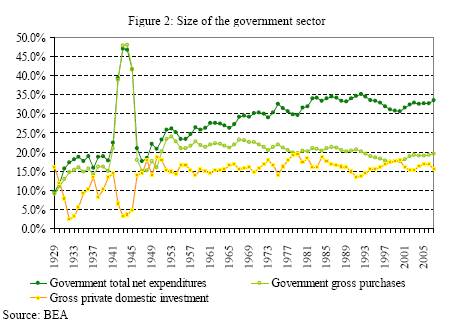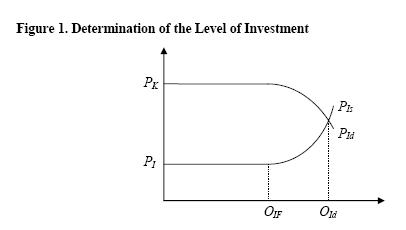By
L. Randal Wray
A job guarantee program is one in which government promises to make a job available to any qualifying individual who is ready and willing to work. Qualifications required of participants could include age range (i.e. teens), gender, family status (i.e. heads of households), family income (i.e. below poverty line), educational attainment (i.e. high school dropouts), residency (i.e. rural), and so on. The most general program would provide a universal job guarantee, sometimes also called an employer of last resort (ELR) program in which government promises to provide a job to anyone legally entitled to work.
Many job guarantee supporters see employment not only as an economic condition but also as a right. Wray and Forstater (2004) justify the right to work as a fundamental prerequisite for social justice in any society in which income from work is an important determinant of access to resources. Harvey (1989) and Burgess and Mitchell (1998) argue for the right to work on the basis that it is a fundamental human (or natural) right. Such treatments find support in modern legal proclamations such as the United Nations Universal Declaration of Human Rights or the US Employment Act of 1946 and the Full Employment Act of 1978. Amartya Sen (1999) supports the right to work on the basis that the economic and social costs of unemployment are staggering with far-reaching consequences beyond the single dimension of a loss of income (see also Rawls 1971). William Vickrey (2004) identified unemployment with “cruel vandalism”,outlining the social and economic inequities of unemployment and devising strategies for its solution. A key proposition of such arguments is that no capitalist society has ever managed to operate at anything approaching true, full, employment on a consistent basis. Further, the burden of joblessness is borne unequally, concentrated among groups that already face other disadvantages: racial and ethnic minorities, immigrants, younger and older individuals, women, people with disabilities, and those with lower educational attainment. For these reasons, government should and must play a role in providing jobs to achieve social justice.
There are different versions of the job guarantee program. Harvey’s (1989) proposal seeks to provide a public sector job to anyone unable to find work, with the pay approximating a ‘market wage,’ whereby more highly skilled workers would receive higher pay. Argentina’s Jefes program (examined below) targets heads of households only and offers a uniform basic payment for what is essentially half-time work. In Hyman Minsky’s (1965) proposal, developed further at The Center for Full Employment and Price Stability, University of Missouri-Kansas City and independently at The Centre of Full Employment and Equity, University of Newcastle, Australia, the federal government provides funding for a job creation program that offers a uniform hourly wage with a package of benefits. (Wray 1998; Burgess and Mitchell 1998) The program could provide for part-time and seasonal work, as well as for other flexible working conditions as desired by the workers. The package of benefits would be subject to congressional approval, but could include health care, childcare, payment of social security taxes, and usual vacations and sick leave. The wage would also be set by congress and fixed until congress approved a rate increase—much as the minimum wage is currently legislated. The perceived advantage of the uniform basic wage is that it would limit competition with other employers as workers could be attracted out of the ELR program by paying a wage slightly above the program wage.
Proponents of a universal job guarantee program operated by the federal government argue that no other means exists to ensure that everyone who wants to work will be able to obtain a job. Benefits include poverty reduction, amelioration of many social ills associated with chronic unemployment (health problems, spousal abuse and family break-up, drug abuse, crime), and enhanced skills due to training on the job. Forstater (1999) has emphasized how ELR can be used to increase economic flexibility and to enhance the environment. The program would improve working conditions in the private sector as employees would have the option of moving into the ELR program. Hence, private sector employers would have to offer a wage and benefit package and working conditions at least as good as those offered by the ELR program. The informal sector would shrink as workers become integrated into formal employment, gaining access to protection provided by labor laws. There would be some reduction of racial or gender discrimination because unfairly treated workers would have the ELR option, however, ELR by itself cannot end discrimination. Still, it has long been recognized that full employment is an important tool in the fight for equality. (Darity 1999) Forstater (1999) has emphasized how ELR can be used to increase economic flexibility and to improve the environment as projects can be directed to mitigate ecological problems.
Finally, some supporters emphasize that an ELR program with a uniform basic wage also helps to promote economic and price stability. ELR will act as an automatic stabilizer as employment in the program grows in recession and shrinks in economic expansion, counteracting private sector employment fluctuations. The federal government budget will become more counter-cyclical because its spending on the ELR program will likewise grow in recession and fall in expansion. Furthermore, the uniform basic wage will reduce both inflationary pressure in a boom and deflationary pressure in a bust. In a boom, private employers can recruit from the ELR pool of workers, paying a mark-up over the ELR wage. The ELR pool acts like a “reserve army” of the employed, dampening wage pressures as private employment grows. In recession, workers down-sized by private employers can work at the ELR wage, which puts a floor to how low wages and income can go.
Critics argue that a job guarantee would be inflationary, using some version of a Phillips Curve approach according to which lower unemployment necessarily means higher inflation. (Sawyer 2003) Some argue that ELR would reduce the incentive to work, raising private sector costs because of increased shirking, since workers would no longer fear job loss. Workers might be emboldened to ask for greater wage increases. Some argue that an ELR program would be so big that it would be impossible to manage; some fear corruption; others argue that it would be impossible to find useful things for ELR workers to do; still others argue that it would be difficult to discipline ELR workers. It has been argued that a national job guarantee would be too expensive, causing the budget deficit to grow on an unsustainable path; and that higher employment would worsen trade deficits. (Aspromourgous 2000; King 2001; See Mitchell and Wray 2005 for responses to all of these critiques.)
There have been many job creation programs implemented around the world, some of which were narrowly targeted while others were broad-based. The 1930s American New Deal contained several moderately inclusive programs including the Civilian Conservation Corp and the Works Progress Administration. Sweden developed broad based employment programs that virtually guaranteed access to jobs, until government began to retrench in the 1970s. (Ginsburg 1983) In the aftermath of its economic crisis that came with the collapse of its currency board, Argentina created Plan Jefes y Jefas that guaranteed a job for poor heads of households. (Tcherneva and Wray 2005) The program successfully created 2 million new jobs that not only provided employment and income for poor families, but also provided needed services and free goods to poor neighborhoods. More recently, India passed the National Rural Employment Guarantee Act (2005) that commits the government to providing employment in a public works project to any adult living in a rural area. The job must be provided within 15 days of registration, and must provide employment for a minimum of 100 days per year. (Hirway 2006) These real world experiments provide fertile ground for testing the claims on both sides of the job guarantee debate.
References
Aspromourgos, T. “Is an Employer-of-Last-Resort Policy Sustainable? A Review Article.” Review of Political Economy 12, no. 2 (2000): 141-155.
Burgess, J. and Mitchell, W.F. (1998), ‘Unemployment Human Rights and Full Employment Policy in Australia,’ in M. Jones and P. Kreisler (eds.), Globalization, Human Rights and Civil Society, Sydney, Australia: Prospect Press.
Darity, William Jr. “Who loses from Unemployment.” Journal of Economic Issues, 33, no. 2 (June 1999): 491.
Forstater, Mathew. “Full Employment and Economic Flexibility” Economic and Labour Relations Review, Volume 11, 1999.
Ginsburg, Helen (1983), Full Employment and Public Policy: The United States and Sweden, Lexington, MA: Lexington Books.
Harvey, P. (1989), Securing the Right to Employment: Social Welfare Policy and the Unemployed in the United States, Princeton, NJ: Princeton University Press.
Hirway, Indira (2006), “Enhancing Livelihood Security through the National Employment Guarantee Act: Toward effective implementation of the Act”, The Levy Economics Institute Working Paper No. 437, January, www.levy.org.
King, J.E. “The Last Resort? Some Critical Reflections on ELR..” Journal of Economic and Social Policy 5, no. 2 (2001): 72-76.
Minsky, H.P. (1965), ‘The Role of Employment Policy,’ in M.S. Gordon (ed.), Poverty in America, San Francisco, CA: Chandler Publishing Company.
Mitchell, W.F. and Wray, L.R. (2005), ‘In Defense of Employer of Last Resort: a response to Malcolm Sawyer,’ Journal of Economic Issues, 39(1), 235-245.
Rawls, J. (1971), Theory of Justice, Cambridge, MA: Harvard University Press.
Sawyer, M. (2003), ‘Employer of last resort: could it deliver full employment and price stability?,’ Journal of Economic Issues, 37(4), 881-908.
Sen, A. (1999), Development as Freedom, New York, NY: Alfred A. Knopf.
Tcherneva, Pavlina and L. Randall Wray (2005), “Gender and the Job Guarantee: The impact of Argentina’s Jefes program on female heads of poor households”, Center for Full Employment and Price Stability Working Paper No. 50, December, www.cfeps.org.
Vickrey, W.S. (2004), Full Employment and Price Stability, M. Forstater and P.R. Tcherneva (eds.), Cheltenham, UK: Edward Elgar.
Wray, L.R. and Forstater, M. (2004), ‘Full Employment and Economic Justice,’ in D. Champlin and J. Knoedler (eds.), The Institutionalist Tradition in labor Economics, Armonk: NY: M.E. Sharpe.
Wray, L.R. (1998), Understanding Modern Money: the key to full employment and price stability, Cheltenham, UK: Edward Elgar.




